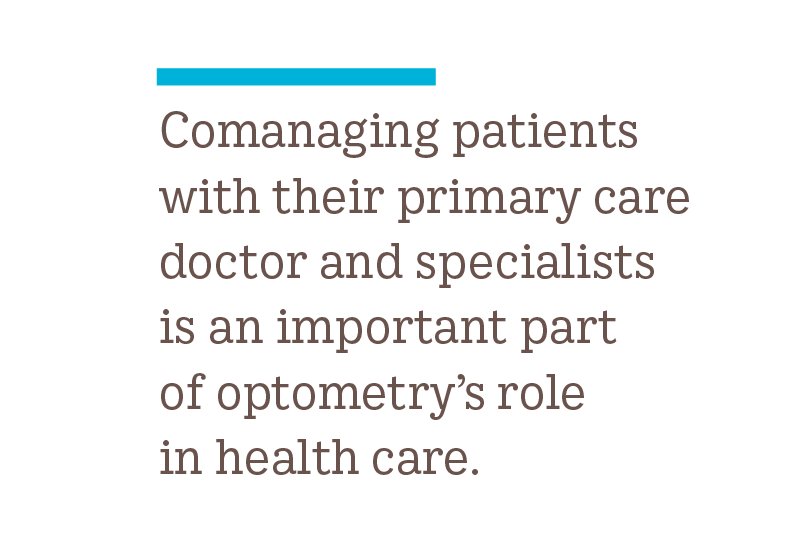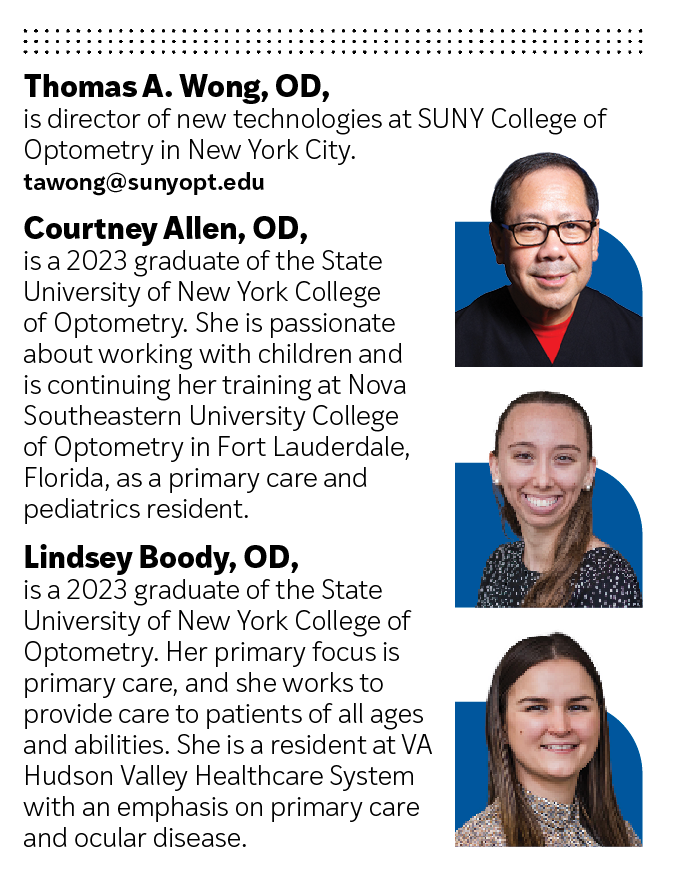Autism spectrum disorder in children requires patience, flexibility
How to tailor an eye examination and what technology to consider.
Children with ASD deserve high-quality, comprehensive care. (Adobe Stock / Dragana Gordic)

Autism spectrum disorder (ASD) is a developmental disorder that leads to impaired communication and social interaction. Symptoms include difficulty interacting with peers, trouble in communicating, and development of repetitive behaviors. These can vary from face tapping and hand flapping to repeated questioning and complex body movements. Children with autism can struggle with eye contact, experience sensitivity to sound or touch, and may prefer to be alone.1
ASD is defined by behaviors and cannot be diagnosed with objective measures such as a blood test or imaging. Typical diagnosis of autism occurs between ages 2 and 3 years; prompt diagnosis is important for early intervention. Prevalence is estimated to be 5 to 6 per 1000 children. The number of children with ASD diagnoses has been increasing due to new diagnostic methods and the awareness that autism is a spectrum disorder.1 Pediatric optometrists play an important role in observing children during their preschool years to detect potential ASD-related behaviors.
Ocular manifestations
Examination by eye care providers is essential in children with ASD due to a significant prevalence of treatable ocular manifestations. Retrospective studies show the most common reasons for ophthalmic referral are ocular misalignment, significant refractive errors, and reduced vision. The rate of amblyopia in patients with ASD is significantly higher than in the general pediatric population, usually due to strabismus and anisometropia. Treatment with spectacles and patching is important to prevent permanent reduction in vision; however, due to the difficulty of maintaining patient attention, reduced vision could be due to limited patient adherence to testing.
Ocular health in these patients needs to be assessed, as well, to determine whether additional ocular pathology is present. Most children with ASD struggle with eye contact; it is important to rule out structural abnormalities that would lead to poor eye contact due to poor vision. Potential etiologies that cause poor vision in children include retinal detachments, Leber congenital amaurosis, and bilateral optic atrophy.2 A full comprehensive exam with an evaluation of ocular health is indicated in these patients.
Optometric intervention is key in decreasing the risk of vision-related learning problems. According to the American Optometric Association, at least 20% of individuals with learning disabilities are thought to have a visual information processing deficit.3 Children with ASD commonly struggle in school and it is estimated that 3 of 4 children with autism have difficulty learning.1 However, vision problems in ASD are generally not the cause of the learning disability and treating a vision problem will not likely resolve the child’s difficulty in school.4 Nevertheless, it is important to remember that vision can have a significant impact on a child’s education. It is crucial to evaluate and treat vision-related learning problems to ensure vision is not the limiting factor in a patient’s education.
Examining children with ASD
Tailoring the optometric examination to children with ASD is important to maximize exam outcomes. These examinations may take longer, and it is important to schedule adequate time. They require flexibility in both the testing done and the order of testing, working with the child to acquire as much information as possible. A standard pediatric eye exam consists of 3 main parts: refraction, binocularity, and ocular health. All 3 can be evaluated, but the method of acquisition changes based on the child’s level of communication and cooperation.
Typically, in children with limited attention or communication skills, the reliability of the responses is variable and we utilize our objective refractive error findings. As many as 25% of children with ASD may be classified as nonverbal.5 However, with retinoscopy and a cycloplegic exam, we are able to determine an accurate spectacle prescription. Often, patients who are nonverbal can match shapes or letters, so it is beneficial to attempt a manifest refraction on all patients.6 Even holding the lenses up to a patient’s face to see whether they show preference for the lenses yields important information to the eye care provider.

Likewise, accommodation and binocularity can be evaluated by different objective techniques, with the patient only needing to briefly fixate on a target. Monocular estimated method retinoscopy can measure the amount of lead or lag of accommodation that a patient possesses and does not require a patient’s response. This provides a functional measurement of the patient’s accommodative ability and should be viewed as equivalent to other subjective testing.6 Eye alignment is evaluated standardly by unilateral and alternating cover tests and vergence is evaluated with near point of convergence testing. With a proper stimulating target, a child with disabilities may be capable of maintaining proper fixation during testing.
The techniques used to evaluate ocular health are mostly objective, except for case history. The doctor can use the slit lamp, binocular indirect ophthalmoscope, or direct ophthalmoscope to view the eye and identify signs of pathology. Some of these methods may feel intrusive to a child with ASD.
Overall, when testing children, it is important to explain aloud to the patient what to expect. Performing the skill on caretakers or siblings to demonstrate has also been effective. Written information with photographs, videos, or a social story can also be provided to the patient’s parents for all testing so that the patient can be aware of what to expect before examination.6
Technology to consider
The goal is to acquire as much information as possible in a way that allows the child with ASD to feel comfortable. Making the tasks feel more approachable and adding relatable stimuli and games has been shown to increase patient cooperation and communication.7 There are many tools for adapting exams.
Noninvasive devices such as the Spot Vision Screener (Welch Allyn) can be used from a distance and have calming sounds to attract the patient’s attention. These devices screen for refractive errors outside the standard range and help guide the provider to confirm a spectacle prescription with retinoscopy. Tablets can be used as fixation targets or as devices for patient communication. A familiar video as indicated by the parent or caregiver can help keep the patient calm and attentive. Multiple applications for language development and communication exist, known as augmentative and alternative communication apps.5 A patient will need to work extensively to learn to use these apps for communication, but they can be recommended to the parents or guardians for long-term help. In patients with suspected amblyopia, a visual evoked potential test can be used even if they are nonverbal.
The size and closeness of many standard ocular health examination devices can be overwhelming to a child with ASD. Alternative smaller handheld devices such as iCare tonometry, handheld slit lamps, and retinal cameras can help the optometrist bring the examination to the patient at an angle that feels comfortable. Binocular indirect ophthalmoscopy is an excellent technique to evaluate the entire eye at a distance from the patient.
Importance of comanagement
Comanaging children with ASD alongside other health care professionals is essential for primary eye care providers. Due to several comorbid conditions, it is important to ensure these children are receiving comprehensive care. Common conditions associated with ASD include constipation, nutritional concerns, and sleep and behavioral disorders.
Cohesive management by primary care providers and specialists is important. Specialists to consider include speech therapists, behavior therapists, occupational therapists, and developmental specialists.8 Observation in the exam is key to determining which referrals are necessary or whether a patient’s primary care provider should be notified. A patient with difficulty balancing or struggling with coordination may benefit from an occupational therapist. If a child has difficulty communicating and understanding directions, a speech and language therapist may be beneficial.9 Optometrists play an important role as a member of a child’s health care team.
Conclusion

Children with ASD deserve high-quality, comprehensive care. For optometrists, it is important to examine these patients, looking for treatable ocular manifestations. Tailoring the examination to acquire accurate objective findings is key to a successful eye exam. It is crucial to consider technology to acquire information and to maintain the child’s focus. Comanaging patients with their primary care doctor and specialists is an important part of optometry’s role in health care. With patience and flexibility, optometrists can successfully examine children with ASD to provide the essential eye care they need.
References
1. Baird G, Cass H, Slonims V. Diagnosis of autism. BMJ. 2003;327(7413):488-493. doi:10.1136/bmj.327.7413.488
2. Lau CSL, Tong JMK, Tang EWH, Li KKW. Ocular features and autism spectrum disorder: a 10-year retrospective review. Indian Pediatr. 2022;59(7):581-582.
3. Optometric clinical practice guideline: care of the patient with learning related vision problems. American Optometric Association. Updated 2008. Accessed July 19, 2023. https://www.aoa.org/AOA/Documents/Practice%20Management/Clinical%20Guidelines/Consensus-based%20guidelines/Care%20of%20Patient%20with%20Learning%20Related%20Vision%20Problems.pdf
4. Keys MP, Silver LB. Learning disabilities and vision problems: are they related? Pediatrician. 1990;17(3):194-201.
5. Lubas M, Mitchell J, De Leo G. User-centered design and augmentative and alternative communication apps for children with autism spectrum disorders. SAGE Open. Published online May 30, 2014. doi:10.1177/2158244014537501
6. Li JC, Wong K, Park AS, Fricke TR, Jackson AJ. The challenges of providing eye care for adults with intellectual disabilities. Clin Exp Optom. 2015;98(5):420-429. doi:10.1111/cxo.12304
7. Valencia K, Rusu C, Quiñones D, Jamet E. The impact of technology on people with autism spectrum disorder: a systematic literature review. Sensors (Basel). 2019;19(20):4485. doi:10.3390/s19204485
8. Van Cleave J, Holifield C, Neumeyer AM, et al. Expanding the capacity of primary care to treat co-morbidities in children with autism spectrum disorder. J Autism Dev Disord. 2018;48(12):4222-4230. doi:10.1007/s10803-018-3630-x
9. Schulman R, Collier J. Treating patients on the autism spectrum. Rev Optom. Published online April 5, 2011. https://www.reviewofoptometry.com/article/treating-patients-on-the-autism-spectrum

Newsletter
Want more insights like this? Subscribe to Optometry Times and get clinical pearls and practice tips delivered straight to your inbox.